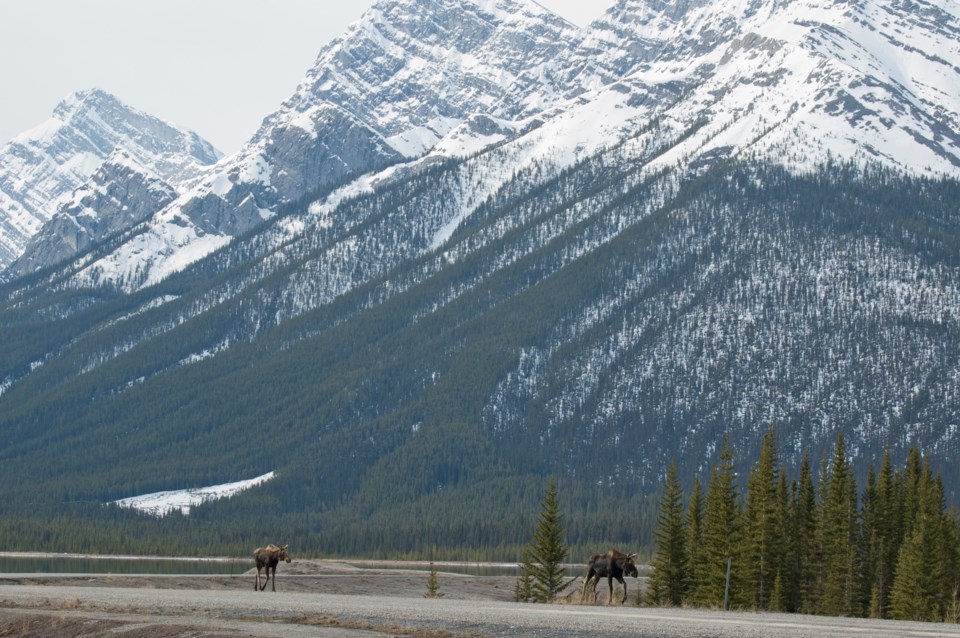Parks Canada was forced to euthanize a mamma moose after she was hit and injured on the Trans-Canada Highway near Lake Louise last week.
The wildlife management team was called to the westbound lane of the highway near the Mount Temple lookout east of Lake Louise about 7:30 a.m. Thursday (Feb. 15) where they found the injured cow moose and a yearling that had breached the wildlife exclusion fence.
“When they arrived at the scene they noticed that the cow moose had been struck by a vehicle and had an injured hind leg,” said Charlie McLellan, acting wildlife management specialist for the Lake Louise, Yoho and Kootenay field unit.
“Unfortunately, it couldn't move on its own so they decided that it would have to be euthanized.”
The wildlife crew herded the surviving yearling moose to the safe side of the wildlife exclusion fence and patched up the area where the two moose had breached the fence.
The yearling was left to fend for itself, but McLellan said examination of the cow moose showed she had not been lactating, indicating the young moose was no longer feeding on milk but browsing on its own.
He said the lack of snow this year is also in the yearling’s favour, meaning there is likely more forage accessible to eat.
“As well, deep snow often gives predators an advantage,” said McLellan, noting, however, the Bow Valley wolf pack does travel in this area.
“The predation piece is always difficult to estimate, but in the absence of predators, I think the yearling would have a really high chance of survival.” Crews traced the tracks of the ungulates to see where the fence had been breached, discovering snow had piled up at one location and pushed in and damaged the fence.
“We’ve done a temporary repair and then a more permanent repair will be done once the snow allows for that,” said McLellan.
Highway fencing in Banff National Park has reduced wildlife-vehicle collisions by more than 80 per cent and, for elk and deer alone by more than 96 per cent.
“Although this incident is unfortunate, the fence is working or else it would be happening far more frequently,” said McLellan.
Moose, which are the largest of the deer family and commonly about the size of a horse, were formerly widely distributed in the park, but have mostly disappeared from the Bow Valley in the last couple of decades.
It has been attributed in part deadly liver fluke, the return of wolves after a long absence, and an unnaturally high number of deaths on the highway before fencing, and the railway.
McLellan said there had been no previous reports of these two moose in the Bow Valley to Parks Canada.
“We see them more commonly in Kootenay National Park, for example, but I hadn't heard indication of those two until this unfortunate event,” he said.
“Like a lot of ungulates, they'll have seasonal migrations. Moose are typically at a lot lower density, just the life history traits of them compared to, say, elk and deer.”



.jpg;w=120;h=80;mode=crop)